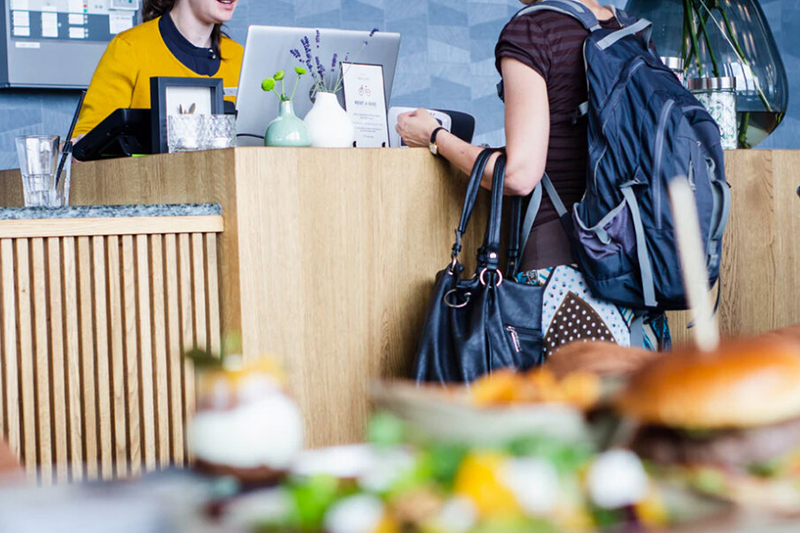Digital is transforming how Quick Service Restaurants (QSRs) do business and stay competitive. We live and breath digital and collaborate with some of the top QSRs on their digital efforts.
Today we are sharing the top 5 digital transformation trends we see at QSRs:
1. Third-party delivery disrupts the industry
Third-party delivery has quickly become the most disruptive force in the restaurant industry.
Delivery orders now make up a large portion of sales for many restaurants and that number continues to grow. In fact, according to Technomic data, consumers spent $10.2 billion on delivery services in 2018, up 42% from 2017.
While the incremental revenue stream and wider marketing reach is welcome, third-party delivery comes with its own set of challenges, namely lower margins, difficulties reconciling data on the backend, and loss of control of the product when it leaves the restaurant.
Some QSRs opt to operate delivery in-house which offers control over the customer experience, better profit margins and great customer data, but it’s an uphill battle to create the system and find drivers.
2. The rise of ghost kitchens
You can’t mention third-party delivery, without discussing ghost kitchens. Also known as virtual or cloud kitchens, ghost kitchens are stripped-down commercial cooking spaces with no dine-in option. Using a cloud-based stream, restaurants can accommodate orders from their own systems or third-party delivery platforms.
These virtual kitchens allow restaurants to focus on their delivery business while reducing rent and labor costs and providing more space for delivery vehicles so they don’t have to compete with customer parking.
Many QSRs are building cloud kitchens into their business models while smaller brands opt to rent space from the growing number of cloud-kitchen rentals on the market.
3. Big data drives business decisions
As Shama Hyder’s recently writes for inc.com:
“What do you serve, and when? Which server covers which shifts? How do you price the different items on your menu? How do you promote specials? And, to which demographic? Was last week’s business bad because of the rain, or because John was manning the register, and he has a difficult time upselling?”
In the past these questions were answered by gut feel, but today QSRs can employ above store technology to connect data from POS systems, customer relationship management programs, social media, Internet searches, sensors, and more, to personalize offerings, incentivize purchase decisions and ultimately increase profitability.
Using middleware and strategic partners (companies like Sparkfly and their ALLY Solutions Partners, Marketing Vitals and ADM Marketing), QSRs can get the business intelligence they need to answer these questions.
4. The influence of social media continues to rise
By this point, social media doesn’t feel as new and exciting as some of the other realms, but its influence on consumers continues to rise and its power cannot be denied.
A recent study by MGH, a full-service restaurant marketing agency, shows that nearly 50% of diners are influenced by social media:
45% of U.S. diners said they’ve tried a restaurant for the first time because of a social media post made by the establishment itself
21% claimed posts could be a deterrent
22% said a restaurant’s social post enticed them to return
The real magic of social media? Customer loyalty driven by brand DNA elements, not gimmicks.
5. Artificial intelligence is the new frontier
The top QSR brands are footing the bill for the latest artificial intelligence technology, acquiring tech companies and investing in startups.
Take McDonald’s, for example. They purchased Dynamic Yield, a decision logic technology company, to automate the upselling of menu items in the drive thru and at it’s touchscreen menu based on time of day, trending items and weather. They also acquired AI startup, Apprente, which understands and responds to human speech in order to take drive-thru orders.
Beyond McDonalds, Chipotle has been testing AI-powered voice assistants for phone orders. The assistant actively listens and with each transaction she learns the idiosyncrasies of how people order, teaching her better questions to ask and more ways to upsell.
Ready to bring all of your marketing efforts together? With Sparkfly, you can connect your digital and physical marketing efforts and optimize customer engagement across every channel. Contact us to learn more (or just to talk digital transformation – we’re always game!).
Third Party Deliver:
https://www.fastcasual.com/articles/third-party-delivery-forces-tough-decisions-for-restaurants/
https://www.fastcasual.com/blogs/third-party-delivery-blessing-or-technology-curse-for-operators/
https://techxplore.com/news/2019-08-millennials-smaller-restaurants-future.html
Ghost Kitchens:
Big Data:
https://www.qsrmagazine.com/outside-insights/why-data-should-drive-strategy-not-just-tactics
https://www.inc.com/shama-hyder/how-big-data-is-transforming-the-restaurant-industry.html
https://www.qsrmagazine.com/operations/big-business-big-data
https://www.restaurantdive.com/news/why-restaurants-need-big-data-to-succeed/553158/
https://www.qsrweb.com/blogs/qsr-brands-suffer-mightily-from-old-unintegrated-tech/
Social Media:
https://www.qsrmagazine.com/news/study-nearly-50-percent-diners-influenced-social-media
https://www.qsrmagazine.com/customer-experience/restaurants-battle-social-media-supremacy
Artificial Intelligence:

